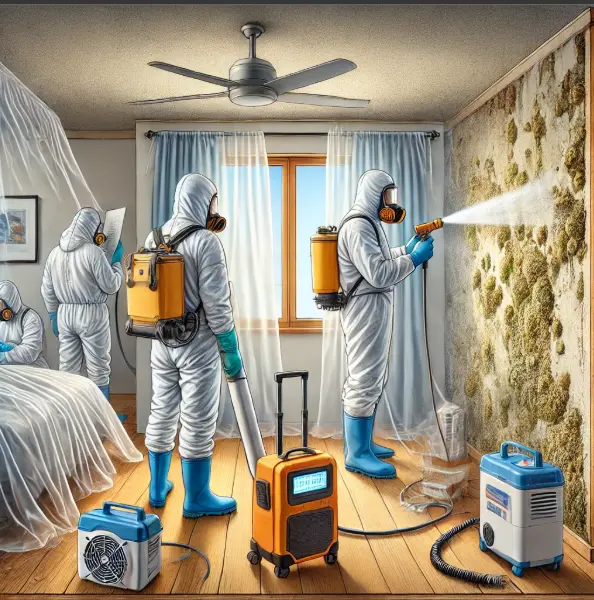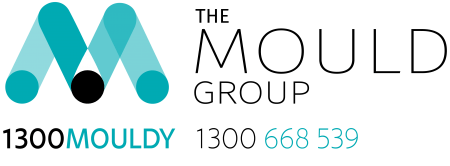How Brisbane’s Weather Affects Mould Growth Year-Round

The Process of Professional Mould Testing and Removal in Brisbane Homes
Mould can be a silent invader in Brisbane homes, growing in damp, humid areas and often going unnoticed. Left untreated, mould can cause serious health risks and structural damage to your property. The first step to dealing with mould is understanding its presence through professional testing. Professional mould testing goes beyond visible detection, ensuring that even hidden mould is identified and properly removed.
Why Professional Mould Testing Is Essential
Brisbane’s warm, humid climate creates ideal conditions for mould growth. While some mould is visible on walls or ceilings, much of it can be hidden in less obvious places like under floors, behind walls, or in roof cavities. Professional mould testing is essential because it provides a comprehensive analysis of the mould present in your home, including mould that can’t be seen.
Professional testing not only identifies mould but also helps determine its type and concentration. This is critical in understanding the severity of the mould problem and planning the appropriate remediation steps.
The Mould Testing Process Explained
At The Mould Group, we use a thorough and scientific approach to mould testing. Our process involves several key steps to ensure accurate results:
1. Initial Inspection
We begin with a detailed visual inspection of your home. This includes looking for any obvious signs of mould growth, water damage, or areas where moisture is likely to accumulate. Bathrooms, kitchens, basements, and roof spaces are common places where mould thrives due to the high levels of moisture in these areas.
The inspection also involves the use of moisture detection tools to measure the moisture content in walls, floors, and ceilings. High moisture levels are a strong indicator of areas where mould may be growing, even if it’s not immediately visible.
2. Air Sampling
Mould spores are microscopic and can float in the air, even in areas where there’s no visible mould. Air sampling is a crucial part of the testing process as it detects mould spores that are present in the air. We collect air samples from various areas of the home to measure the concentration of mould spores.
These samples are sent to an accredited laboratory for analysis. The results give us a detailed understanding of the types and amounts of mould spores present in the air, helping to determine the severity of the problem.
3. Surface Sampling
In areas where mould is suspected but not visible, surface sampling is used to collect samples from walls, floors, or other surfaces. This involves swabbing or tape-lifting materials from suspected areas to detect mould spores. Surface samples help identify the specific type of mould present, which is crucial for understanding the potential health risks and determining the best removal methods.
4. Laboratory Analysis
Once the air and surface samples are collected, they are sent to a laboratory for analysis. This analysis identifies the specific types of mould present and their concentration levels. Different types of mould pose different risks. For example, some species are known to cause severe allergic reactions, while others can produce toxic by-products that are hazardous to health.
Laboratory analysis also helps in confirming the extent of mould growth, allowing us to recommend appropriate remediation steps based on the type and concentration of mould detected.
5. Comprehensive Report
After testing and analysis, we provide you with a detailed report. This report outlines:
- The areas of the home where mould was detected.
- The types of mould present.
- The concentration of mould spores in the air.
- Recommendations for mould removal and remediation.
This report serves as a guide to help homeowners understand the scope of the problem and take the necessary actions to restore a healthy living environment.
Mould Removal: What Happens Next?
Once mould has been identified, the next step is professional removal. Mould removal, or remediation, is not just about cleaning away visible mould. It involves a systematic approach to ensuring that the mould is entirely eradicated, and the environment is treated to prevent further growth. The Mould Group follows strict protocols for safe and effective mould removal.
1. Isolating the Affected Areas
Before mould removal begins, the affected areas must be contained to prevent the spread of mould spores to other parts of the home. This often involves sealing off the area with plastic sheeting and using negative air pressure systems to keep spores from becoming airborne.
2. Removing the Mould
Once the area is contained, the actual removal of mould begins. This can involve:
- Surface cleaning: Using specialised cleaning agents to remove mould from non-porous surfaces like tiles and metal.
- Material removal: For porous materials such as drywall, insulation, or carpeting that have been heavily affected, removal is often necessary, as mould can penetrate deep into these materials.
Professional-grade equipment is used to ensure that all mould is safely removed, without releasing spores into the air.
3. Air Scrubbing and Filtration
Throughout the mould removal process, air scrubbers and HEPA filtration systems are used to capture airborne mould spores. This ensures that the air in your home is clean and free from any remaining spores that could cause further problems.
4. Drying and Dehumidification
Once the mould is removed, it’s crucial to address the moisture problem that caused the mould in the first place. We use dehumidifiers and other drying techniques to reduce the humidity levels in the home and eliminate the moisture that encourages mould growth. Without proper moisture control, mould can easily return.
5. Final Inspection and Clearance
After mould removal and drying, we conduct a final inspection to ensure that all mould has been successfully eradicated. In some cases, additional air sampling may be performed to confirm that mould spore levels are within safe limits. Once the site is confirmed to be mould-free, we provide a clearance certificate, giving you peace of mind that your home is safe for occupancy.
Why DIY Mould Removal Isn’t Enough
Many homeowners are tempted to use DIY methods for mould removal, such as scrubbing with bleach or using over-the-counter mould sprays. However, these methods are rarely effective in dealing with serious mould problems. DIY mould removal often:
- Fails to address hidden mould growth behind walls or under flooring.
- Doesn’t eliminate the source of the moisture that caused the mould in the first place.
- Can spread mould spores, worsening the problem.
Professional mould removal ensures that all mould is safely and thoroughly eliminated, reducing the risk of recurrence and protecting your health.
Professional Mould Testing and Removal for a Healthy Home
Mould can have serious effects on both your health and the structural integrity of your home. Regular mould testing is essential, particularly in Brisbane’s humid climate, where mould thrives. At The Mould Group, we provide professional mould testing and removal services to ensure that your home is safe, clean, and mould-free.
By following a comprehensive process that includes inspection, air and surface sampling, and professional removal, we help homeowners address mould problems at their root. Contact us today to schedule a mould inspection and take the first step in protecting your home and health.
See our article on How Brisbane’s Weather Affects Mould Growth Year-Round

